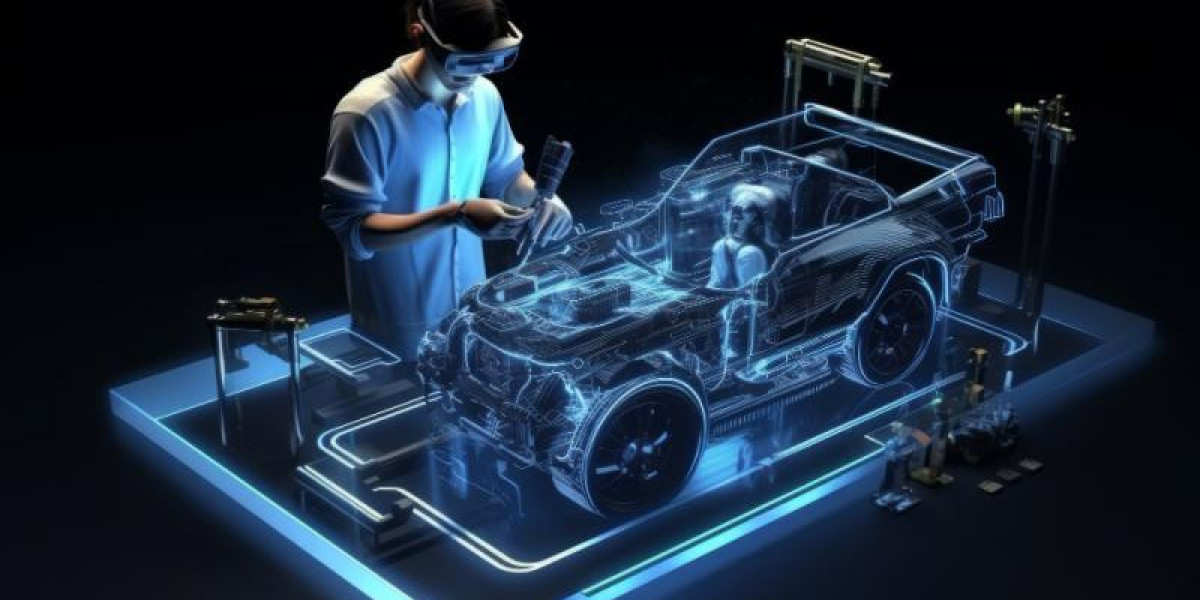The automotive industry is at a pivotal juncture, driven by the rapid advancements in technology. As digital transformation continues to reshape the sector, the integration of 5G-powered IT solutions is emerging as a game-changer. This evolution is not only enhancing operational efficiencies but also revolutionizing customer experiences, safety, and innovation. This article delves into how 5G technology is accelerating growth in the automotive industry, emphasizing the critical role of automotive industry IT services.
The Dawn of 5G in the Automotive Industry
Understanding 5G Technology
5G, the fifth generation of wireless technology, promises significantly faster data speeds, lower latency, and greater connectivity compared to its predecessors. These advancements facilitate a wide range of applications that were previously unattainable, particularly in the automotive industry. The capabilities of 5G are driving new IT services, from enhanced vehicle-to-everything (V2X) communication to autonomous driving solutions.
The Automotive Industry's Technological Landscape
The automotive industry has long been a forerunner in adopting new technologies to improve vehicle performance, safety, and user experience. From the early days of electronic fuel injection systems to today's advanced driver-assistance systems (ADAS), the sector has continuously evolved. Now, with the advent of 5G, the industry stands on the brink of another transformative leap.
Key Areas Where 5G is Transforming the Automotive Industry
1. Enhanced Vehicle Connectivity
Vehicle-to-Everything (V2X) Communication
5G enables robust V2X communication, allowing vehicles to interact with each other (V2V), with the infrastructure (V2I), and with pedestrians (V2P). This comprehensive connectivity ensures real-time data exchange, enhancing traffic management, reducing accidents, and optimizing travel routes.
Infotainment Systems
With 5G , in automotive car infotainment systems can offer high-definition streaming, augmented reality (AR) navigation, and seamless connectivity for multiple devices. Passengers can enjoy uninterrupted entertainment while drivers benefit from advanced navigation and real-time traffic updates.
2. Autonomous Driving
Real-time Data Processing
Autonomous vehicles require immense computational power to process data from numerous sensors, cameras, and lidar systems. 5G's low latency ensures that this data is processed and transmitted almost instantaneously, enabling safe and efficient autonomous driving.
Improved Safety Mechanisms
5G facilitates the rapid exchange of critical safety information between vehicles and infrastructure. For instance, in the event of an accident, nearby vehicles can be alerted in real-time, allowing them to take evasive actions and potentially prevent further collisions.
3. Predictive Maintenance and Over-the-Air (OTA) Updates
Predictive Maintenance
By leveraging 5G connectivity, automotive IT services can monitor vehicle health in real-time. Predictive maintenance algorithms analyze data from various vehicle components, predicting potential failures before they occur and alerting drivers to take preventive measures.
Over-the-Air (OTA) Updates
5G allows manufacturers to deploy OTA updates seamlessly. This capability ensures that vehicles remain up-to-date with the latest software enhancements, security patches, and feature upgrades without requiring a visit to the service center.
4. Smart Manufacturing and Supply Chain Management
Factory Automation
The integration of 5G in automotive manufacturing processes enhances automation and operational efficiency. Robotics and machinery connected via 5G can communicate and coordinate in real-time, reducing downtime and increasing productivity.
Supply Chain Optimization
5G-powered IT solutions enable real-time tracking of parts and materials across the supply chain. This visibility helps manufacturers to optimize inventory levels, reduce lead times, and respond swiftly to disruptions.
5. Enhanced Customer Experience
Personalized Services
Automotive industry IT services powered by 5G can deliver personalized services to customers. For example, connected vehicles can remember driver preferences, suggest maintenance schedules based on driving patterns, and provide tailored insurance plans.
Remote Diagnostics
5G facilitates remote diagnostics, allowing technicians to access a vehicle's data and diagnose issues without the vehicle needing to be physically present at the service center. This capability can significantly enhance customer convenience and satisfaction.
Case Studies: 5G in Action in the Automotive Industry
Tesla: Pioneering OTA Updates
Tesla has been at the forefront of leveraging 5G for over-the-air updates. The company's vehicles receive regular software updates that enhance performance, introduce new features, and improve safety. This approach has set a new standard in the industry, showcasing the potential of 5G-powered IT services.
BMW: Enhancing Manufacturing with 5G
BMW's smart factory initiative incorporates 5G to enhance manufacturing processes. The high-speed, low-latency communication provided by 5G enables real-time coordination between robots and assembly lines, increasing efficiency and reducing production errors.
Audi: Advancing Autonomous Driving
Audi has been actively exploring 5G for autonomous driving. The company's vehicles use 5G to communicate with infrastructure and other vehicles, enabling smoother and safer autonomous driving experiences. Audi's investment in 5G technology underscores its commitment to innovation and safety.
Challenges and Considerations
Infrastructure Development
The deployment of 5G infrastructure is a significant challenge. Building the necessary network of antennas and base stations requires substantial investment and coordination. Additionally, ensuring coverage in rural and remote areas remains a critical concern.
Cybersecurity
As vehicles become increasingly connected, the risk of cyberattacks grows. Ensuring robust cybersecurity measures is essential to protect vehicles and their occupants from potential threats. This includes securing communication channels, safeguarding personal data, and implementing fail-safe mechanisms.
Regulatory and Ethical Considerations
The adoption of 5G in the automotive industry also raises regulatory and ethical questions. Policymakers need to establish guidelines for data privacy, safety standards, and liability in case of accidents involving autonomous vehicles. Ethical considerations, such as decision-making algorithms in autonomous driving, also require careful deliberation.
The Future of 5G in the Automotive Industry
Continuous Innovation
The future of 5G automotive industry promises continuous innovation. As technology evolves, new applications and services will emerge, further enhancing vehicle performance, safety, and user experience. The integration of artificial intelligence (AI), machine learning, and edge computing with 5G will drive these advancements.
Collaboration Across Sectors
Collaboration between automotive manufacturers, technology companies, telecom providers, and regulatory bodies will be crucial in realizing the full potential of 5G. Joint efforts can accelerate infrastructure development, standardize protocols, and address common challenges effectively.
Sustainability and Efficiency
5G technology can contribute to sustainability and efficiency in the automotive industry. By optimizing traffic flow, reducing fuel consumption, and enabling efficient manufacturing processes, 5G can help reduce the environmental impact of the automotive sector.
Conclusion
The integration of 5G-powered IT solutions is set to revolutionize the automotive industry. From enhanced vehicle connectivity and autonomous driving to predictive maintenance and smart manufacturing, the benefits of 5G are extensive. Automotive industry IT services are at the forefront of this transformation, driving innovation, efficiency, and customer satisfaction. As the industry continues to evolve, the collaboration between various stakeholders will be key to unlocking the full potential of 5G, paving the way for a safer, smarter, and more sustainable automotive future.


